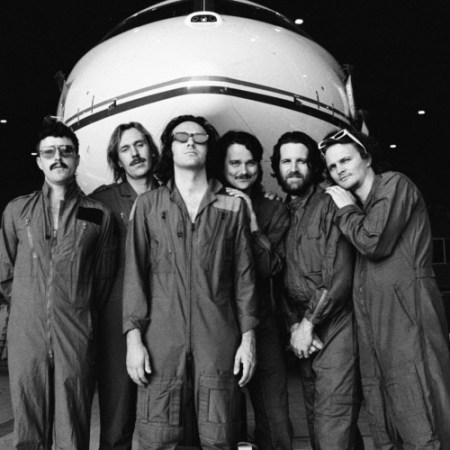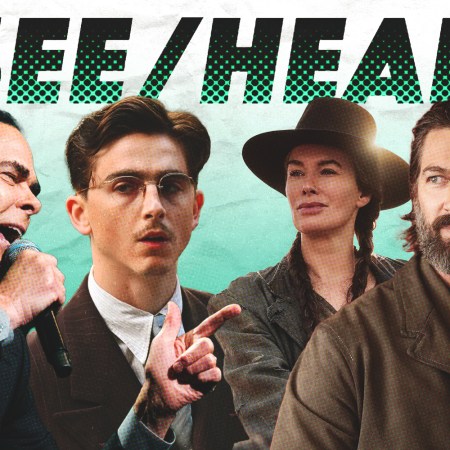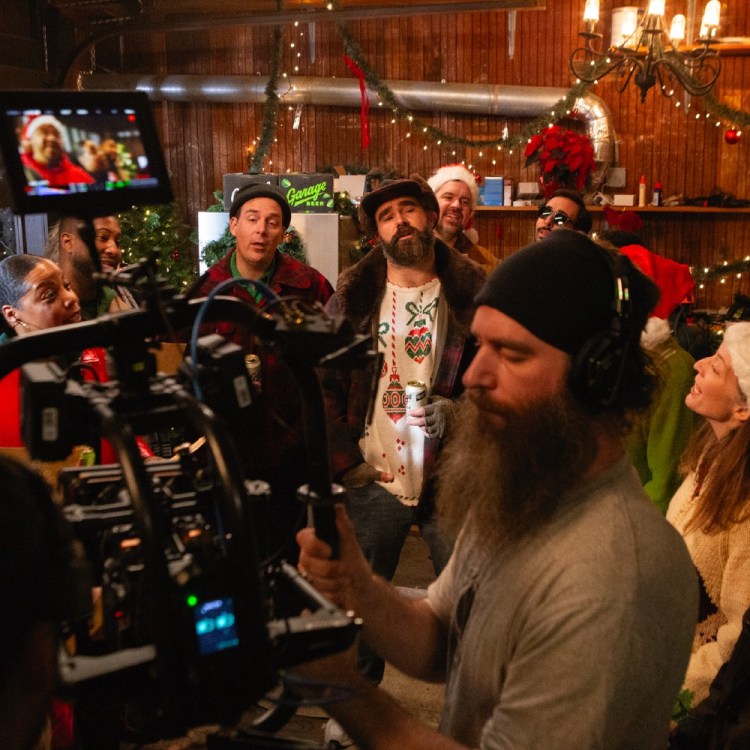One of the greatest artifacts of ‘80s music is a grainy YouTube video, likely many generations removed from its original VHS source, showing a scene from the 1985 Grammy Awards. In it, four men stand completely surrounded by what looks to be the cockpit of a spaceship; banks of keyboards and electronic instruments. A robotic voice asks the players to identify themselves: Herbie Hancock, Thomas Dolby, Stevie Wonder and a man in a canary-yellow suit playing a keytar: Howard Jones.
The quartet proceeds to play a medley of their electro-driven ‘80s hits: Hancock’s “Rockit,” Dolby’s “She Blinded Me With Science,” Wonder’s “Go Home” and Jones’ “What Is Love?” It ends, inexplicably and fabulously, with synthesized fifes and snare drums playing “America the Beautiful,” as Dolby parades around the stage waving a conductor’s wand.
To many viewers today, the most mind-boggling part of the performance is probably not the patriotic” finale but the presence of the man in the yellow suit. At the time, Jones was a rising star of British new wave, in the midst of an impressive string of transatlantic hits: “New Song,” “Things Can Only Get Better,” “Life in One Day” and his best-known song, “No One Is to Blame.” Today, for reasons as fuzzy as those decayed VHS transfers, Jones’ name seldom comes up in conversations about the best synth-pop of his era. But it should.
One of the best ways to appreciate Jones’ talent, ironically, is to hear him play his old hits without the benefit of synthesizers. I was able to do just that on February 3rd, when Jones came to Los Angeles on his current tour, “The Songs and the Stories.” At the concert, Jones performed solo, accompanying himself on an electric piano, which the classically trained musician wields with a skill that belies his reputation as one of the ‘80s’ biggest champions of electronic music. Stripped of drum machines and the distinctive gurgles and stabs of analog synths, Jones’ songs reveal their melodic and rhythmic ingenuity. “Life in One Day” becomes a jaunty calypso tune; the call-and-response chorus of “Things Can Only Get Better” feels even more life-affirming.
“Life-affirming” is a good way to sum up Jones’ music. A thread of relentless optimism runs through all his work, even on more melancholy songs like “No One Is to Blame,” which resolves its unrequited yearning in warm chords and the reassuring koan of its title (and, in its radio-friendly single version, the cozily familiar drum fills of Phil Collins). That positivity sometimes made him a punching bag in the press — especially in England, where critics were more inclined to celebrate the gloom of New Order and Depeche Mode than a man who cavorted in his live shows with a mime and penned lyrics like “Try and enjoy the here and now/The future will take care of itself somehow.”
To that end, he’s continued to release new music, both of the electronic and acoustic variety. And some of it is quite good; on his current solo tour, one of the evening’s most moving moments comes courtesy of “Soon You’ll Go,” a song written for his daughter as she entered adulthood that appeared on his 2009 album Ordinary Heroes as a piano ballad accompanied only by strings and a male choir. Like the best Howard Jones songs, it’s unabashedly earnest and heartfelt in a way that many critics would no doubt read as maudlin — but that’s also part of its charm. It’s the work of a man who, as he proudly proclaimed on his first single, “New Song,” doesn’t want to be “hip and cool.”
I was reminded of this by Jones himself when I interviewed him ahead of his current solo tour. “I was much more taken seriously here in the States,” he noted of his early career. “It’s much more of a problem for me back home in England. … But that’s fine. It served me well. When you get attacked, it gives you more power to fight back [and] prove them all wrong.”
Many of Jones’ contemporaries weathered similar critical lashings, only to later be celebrated, especially as the so-called “Poptimism” movement among music writers made it less fashionable to view commercial success as artistically suspect. So far Jones hasn’t enjoyed the same rehabilitation as Duran Duran or Tears for Fears, but he insists he’s not concerned about such things. “I’m honestly not bothered about that. I just do what I do. I’m not chasing anything. I’m not chasing any recognition or accolades or awards. I’m just doing what an artist should do, which is be who they are and stick to their guns.”
Or does he? When Jones sang that lyric at the show I saw, he cheekily interjected, “No, no, I do want to be hip and cool.” Elsewhere in the set, he described playing the 1985 charity mega-concert Live Aid but expressed regret that he wasn’t asked to be part of “Do They Know It’s Christmas?”, the star-studded single that preceded it. “I don’t think I was really part of that ‘80s scene enough,” he told the audience. “I was always a bit of an outsider. I apologize for that and I’m working on it.”
Jones played one cover in his set: “Careless Whisper,” by yet another ‘80s group, Wham!, once dismissed by critics and later celebrated, even before George Michael’s death, as one of the decade’s greatest acts. Whether Jones himself will someday be included in that company, or forever be “a bit of an outsider,” remains to be seen — but I think it’s only a matter of time before his catalog gets the wider recognition it deserves. If there’s one thing I’ve learned from being a Howard Jones fan all these years, it’s how to remain optimistic.
This article appeared in an InsideHook newsletter. Sign up for free to get more on travel, wellness, style, drinking, and culture.
























